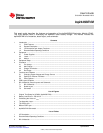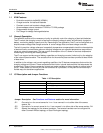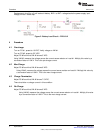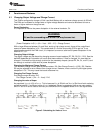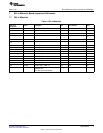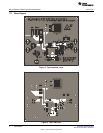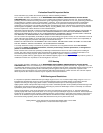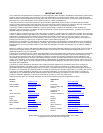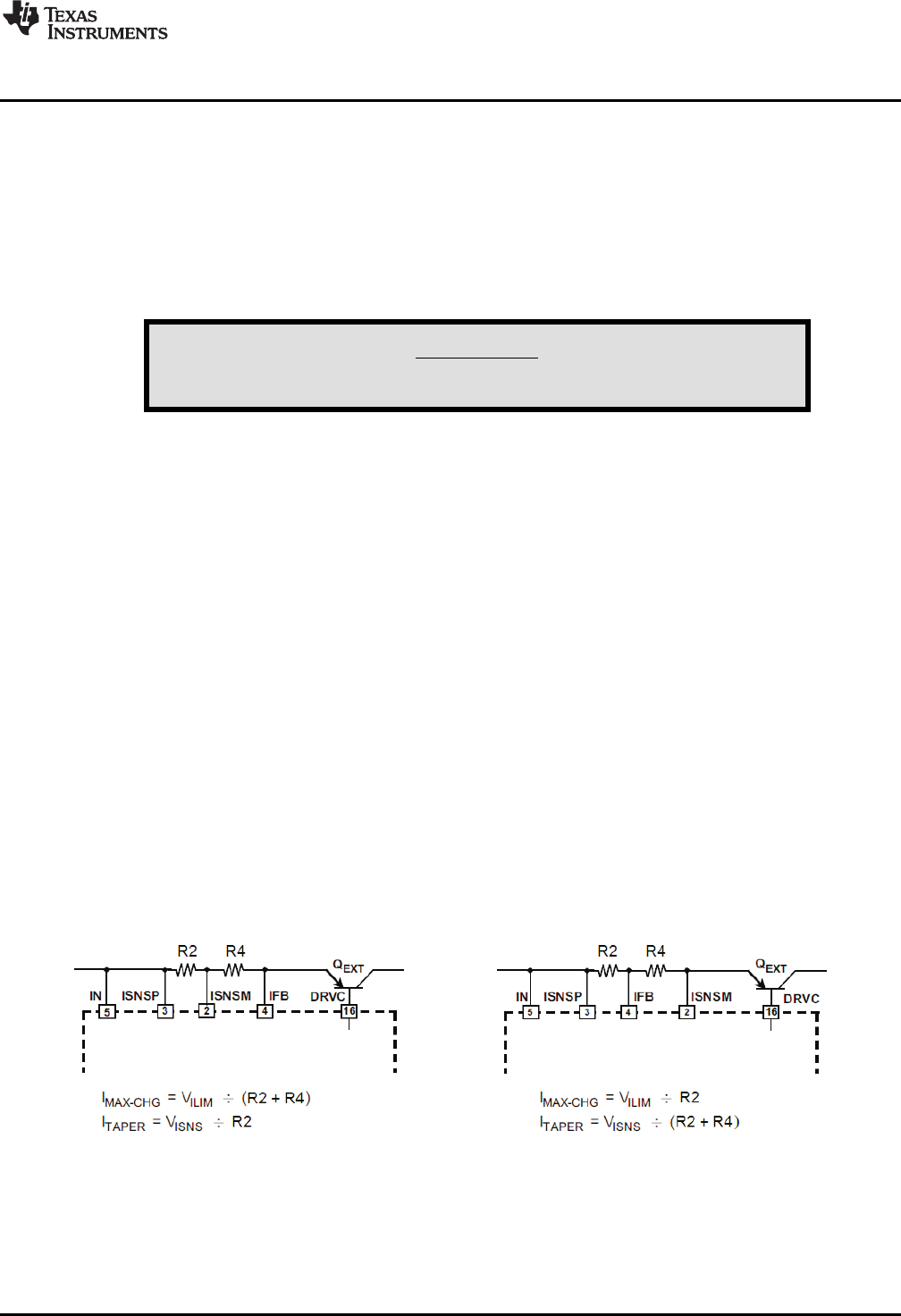
www.ti.com
Functions and Features
5 Functions and Features
5.1 Changing Output Voltage and Charge Current
This EVM is configured to charge a 3-Cell Lead Acid Battery with a maximum charge current of 450 mA.
The EVM can be altered to charge lower or higher voltage batteries and can also be altered to have a
lower or higher maximum charge current.
Power Dissipation
It is important to monitor the power dissipation in the external transistor, Q1.
WARNING
Q1 and the surrounding area of the PCB may become hot.
(Power Dissipation in Q1) = (Vin – Vout – 0.25 – 0.7) × Charge Current
With a large difference between Vin and Vbat, and/or a high charge current, there will be a significant
amount of power dissipation in Q1. This causes both Q1 and the surrounding PCB to get hot. If any
alterations are made to the EVM circuit, it is important to ensure a safe level of power dissipation in the
external FET, Q1.
Changing Output Voltage
The output voltage may be altered by changing some on-board resistors (R7, R8, R9, R11, R12). See the
bq24450 datasheet for information on how to size these resistors. If Vout is changed, Vin must also be
changed. Vin should be high enough to allow for the necessary dropout (across R2, R4, Q1, and D1) and
low enough to maintain a safe level of power dissipation.
Changing the Maximum Charge Current
The maximum charge current is set by sense resistor, R2. (Max Charge Current) = (0.25) / R2. Resistor
R2 may be adjusted to set a different max charge current. However, more current will yield higher power
dissipation in Q1. This may cause the board to become hot.
Changing Pre-Charge Current
Pre-Charge current is set by R10.
Pre-Charge Current = (Vin – 2 – Vout) / R10
Changing the value of Itaper
As populated, I
TAPER
is 10% of I
Max-Chg
. This is because V
ILIM
is 250mV and V
ISNS
is 25mV and both are being
sensed across R2. If a different value of I
TAPER
is desired, R4 can be populated (with a non-zero resistor)
and JP1 and JP2 can be used to connect pins ISNSM and IFB to opposite sides of R4. See figure below.
Figure 3. Calculating the Value of I
TAPER
5
SLUU464–November 2010 bq24450EVM
Submit Documentation Feedback
© 2010, Texas Instruments Incorporated



